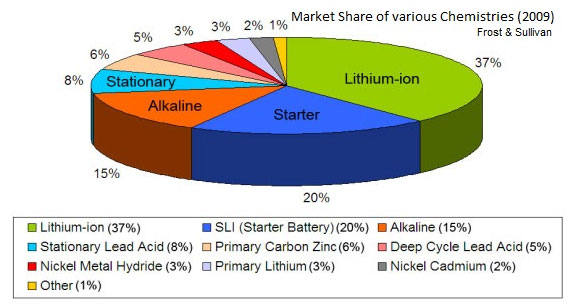State-of-Charge
The amount of energy remaining in the battery is often measured by State-of-Charge (SoC). SoC is measured using different techniques ranging from very simple Voltage Method (most inaccurate) to Complex Quantum Magnetism and Impedance spectroscopy. Use of Hydrometer for lead acid battery systems is also common. Laptops and professional portable devices use Coulomb Counting technique to measure SoC. It works on the principle of measuring the current flowing in and out of the battery which would be almost equal when fully charged. Though the performance deteriorates with age of the battery, periodic calibration by full discharge and charging helps keep the system error to around a few percents. Capacity rating is often specified as Ampere-Hour product which is indicative of the value of constant current that can be supplied over an hour. For example, a 50mA-Hr battery can deliver 50mA constant current for one hour.
Risks with Batteries
Batteries are prone to accidents like leakage and explosions which are caused mainly due to mishandling or misuse of the batteries. While an explosion may result from misuse like throwing in a flame, attempting recharge of a primary cell, short circuiting, overcharging etc, leakage is mainly either due to manufacturing defects or the storage conditions like temperature, humidity and position. This may result in the leakage of potentially corrosive materials as in the case of a few batteries like Lead Acid and do damage to the equipment in which these have been installed. Use of environmentally dangerous materials like mercury in the batteries have raised widespread concern and have called for various constitutional acts of restrictions on battery materials.
Market Share of Various Batteries

The whole battery market can be broken up into different subsets where different kind of requirements necessitates the use of different battery types. While Lead Acid battery is still the most popular for cranking automobiles, Lithium Ion cells have gained immense popularity among consumer products like laptops, MP3 players and cell phones. Military missions still prefer primary batteries for greater reliability of new primary cells. NiMH and Li-Ion compete in segments of rechargeable and replaceable cells like those in digital cameras and cordless phones with NiMH batteries offering low cost batteries in various formats like different sized (AA, AAA etc) pencil cells. Developing nations seem to be a very potent market for battery sales. Electric cycles and cars being an area of active interest in view of reducing stockpile of fossil fuels invite increased attention to battery technology. Load leveling in wind turbines, solar power and other renewable resources in the form of grid storage, electric power trains etc offer bright future to batteries. The market is continuously growing and is expected to reach $30.5 Billion by 2015.
Future
There are lots of challenges, and each challenge offers an opportunity for this technology to grow. Advancements in the form of super-capacitors and fuel cells are being made. Battery as an ultimate replacement for fossil fuels faces several roadblocks. Powers in terms of Megawatts to provide lift off to an airplane or to drive a ship would be required and the chances that batteries would be surpassing this barrier anywhere in the near future seems bleak. Right now, all that can be said is that if batteries are to replace fossil fuels as a mainstay of human lives, it has very big shoes to fit in.
Filed Under: Articles


Questions related to this article?
👉Ask and discuss on Electro-Tech-Online.com and EDAboard.com forums.
Tell Us What You Think!!
You must be logged in to post a comment.